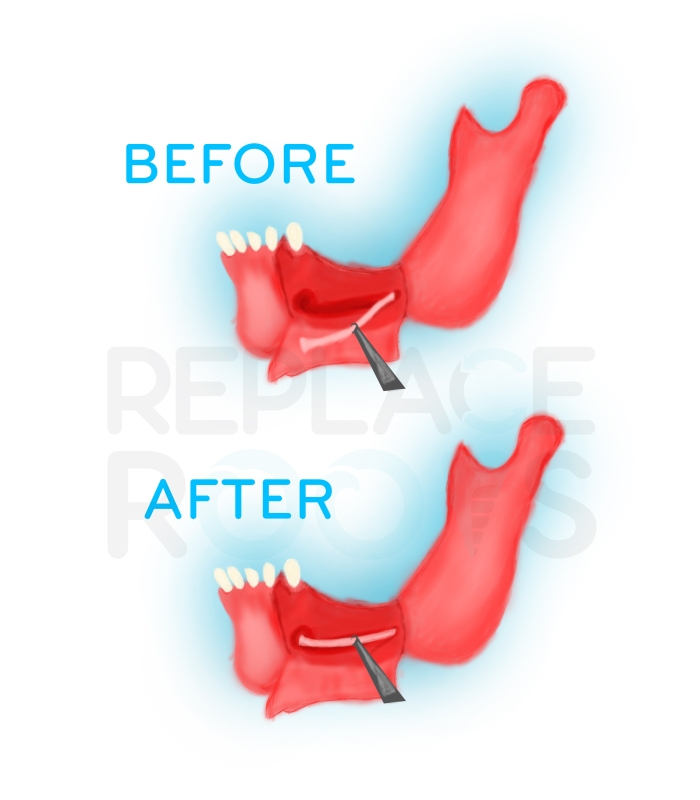 Nerve Lateralization
Nerve Lateralization
Some patients have their mandibular nerve positioned very high in their jaw bone. The inter-arch vertical distance between the top of the crest of their mandibular jaw bone and their upper teeth is very limited. That inter-arch vertical distance is very necessary to allow room to put proper prosthetic on top of the implants, which will be placed in the mandible.
Nerve repositioning surgery is one of the treatments chosen for the patients with edentulous posterior atrophic mandible. Nerve-Repositioning or “Nerve Lateralization” is reserved for the rarest of cases, but is extremely useful in the right situation. This is a procedure that Replace Roots perform.
It is only done to replace the lower back teeth with a very unique situation. You may need this procedure if the bone is not “tall” enough to have an implant. There also needs to be a lack of space from in-between your top and bottom teeth.

Use of Nerve Lateralization
The inferior alveolar nerve which gives feeling to the lower lip and chin may need to be moved in order to make room for placement of dental implants to the lower jaw. This procedure is limited to the lower jaw and indicated when teeth are missing in the area of the two back molars and/or and second premolar, with the above-mentioned secondary condition.
In order to safely place dental implants, the structures surrounding the treatment area must be carefully evaluated. The inferior alveolar nerve, which runs along the lower jaw, controls sensation in the patient’s lower lip and chin. In rare cases, nerve repositioning, or nerve lateralization, is necessary to avoid serious complications. This includes patients who have inadequate bone or the space between the bone and nerve is too narrow. The purposes of this procedure are to protect the inferior alveolar nerve, avoid potential complications, and allow the patient to maintain feeling in the lower lip and chin.
